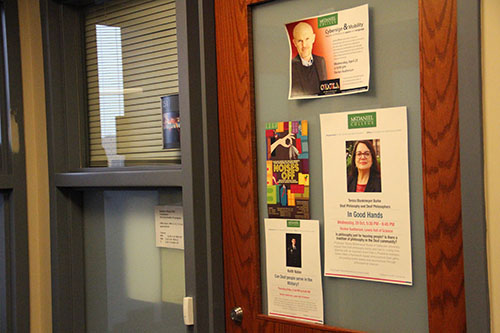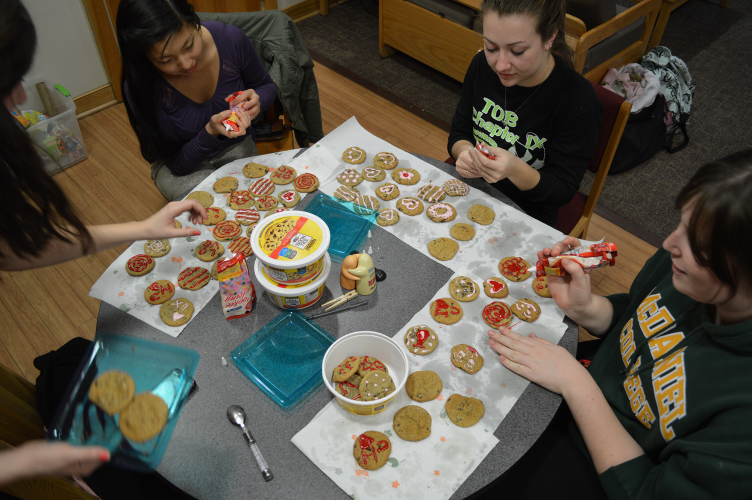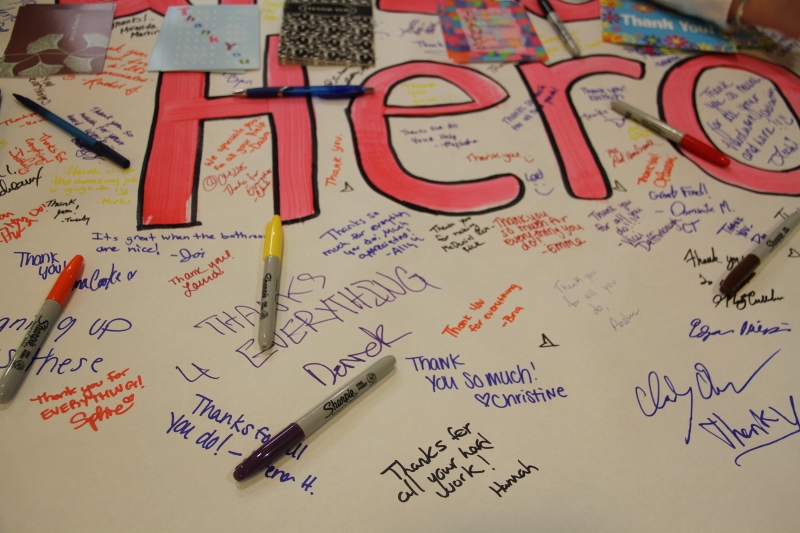Did you know that American Sign Language is the second largest language program on campus, with 225 students currently taking ASL courses? Have you ever wondered why the ASL department is not considered part of the foreign language department, or why there is currently no ASL major?
Undergraduate coordinator of the ASL and Deaf Studies program Sandra Wood, graduate department chair Mark Rust, and faculty member Cecily Whitworth recently answered some questions surrounding their program and department – which, for the second-most-popular language program on campus, is still largely a mystery to many students.
“We basically have two cultures here – we have Deaf and hearing,” says Mark Rust, the coordinator for the graduate program in Deaf Education and the department chair for the ASL Studies and Deaf Education Department. “Our goal is basically to have the Deaf community collaborate with the hearing students to become more ASL competent and culturally fluent.”
Since ASL is so closely tied to Deaf culture, the ASL and Deaf Studies minor is not just a language minor. It encompasses Deaf culture as well as linguistics to offer students a more immersive experience. The ASL/Deaf Studies undergraduate program was previously a program independent of the Deaf Education program, which then existed under the Education Department. This year, the Deaf Education program left the Education Department, and merged with the ASL/Deaf Studies program to create the Department of ASL Studies and Deaf Education.
“It was decided that it would be in our best interest to be a self-contained department for now, but we are open to new possibilities, new avenues for growth in the future,” says Sandra Wood.
Wood is happy to work with the foreign language department despite being a separate entity. She believes there are many similarities between the ASL and Deaf Studies program and the programs that exist within the foreign language department.
“As I understand it, the plan is right now is that we will continue as we are in this department but work on developing opportunities for growth and collaborations with other departments,” Wood says. “We also want to expand our programs within the new department and we have many different ideas about how to achieve this.”
McDaniel accepted American Sign Language as part of the McDaniel Plan’s Second Language requirement in 2007, and because of this, the program has greatly expanded. In 2005, the program had a total of 45 students involved – it now has 225 as of fall 2014.
Many students who are involved with the ASL and Deaf Studies program are also involved with the Education Department. The most common problem that these students face is the heavy course load. Since ASL and Deaf Studies and education are both minors, students wishing to pursue these must balance the two minors with at least one major – as opposed to students in the foreign language department, who can major in a language and minor in education. Students sometimes end up dropping one of these two minors to stay afloat.
”We have a lot of minors, and a lot of kids are also in the education minor,” Wood explains. “The education minor is 72 credits and the ASL minor is 26 credits, and very often we find students trying to carry the double-minor load plus majors. I think a lot of students just find themselves going under at that point and they have to make some choices.”
Wood further explains that ASL and Deaf Studies minors are also required to live in the ASL House for a semester or complete an ASL-related internship, and many students find that they do not have the time to do this. Frequently, students choose to drop the ASL and Deaf Studies minor rather than the education minor.
“The response that we get back is that they wish there were some other solutions,” says Wood.
The ASL and Deaf Studies department has been weighing the pros and cons of an ASL major for a while. Faculty member Cecily Whitworth believes that the department must first build on their “understaffed” faculty.
“We currently have just one full-time tenure-track Assistant Professor (Dr. Wood) and one full-time Visiting Assistant Professor (me),” Whitworth explains. “However, the majority of ASL classes are taught by adjuncts. It is often difficult to find qualified teachers who are willing to commute to Westminster twice a week for a job that offers extremely low pay and no job security. Several excellent adjunct professors over the past couple of years have stopped teaching at McDaniel because they were offered full-time positions (with reasonable salaries, offices, benefits, etc.) at other colleges. The department is always sad to lose great teachers, but I think we all understand the decision. It would be extremely difficult to offer enough courses and enough advising time to run a major without multiple additional full-time faculty in the department.”
Rust comments, “we don’t want to just set up a major for the sake of having a major. We would want that major to have a career path with it, so that students have something to do after graduation,” says Rust. “ASL right now is a very popular language. People want to take it. And there’s a big need out there in the world for employees who have those skills, particularly in ASL interpreting. I would suspect, although I’m not entirely sure, that a lot of the students have the goal of becoming an interpreter in the future.”
Rust continues, “right now, in Maryland, there are a lot of kids who are learning ASL in the public school system, but then there are no certified ASL teachers available to them. So the question is: how can we meet that need of providing ASL-certified instructors?”
Whitworth believes the first steps would be “to move the ASL program to the Foreign Languages department and add enough faculty to adequately support the minors we have and the growing number of students interested in ASL one through three.”
Rust and Wood’s ideal would be to have an ASL major provide a strong foundation for anything its students wish to pursue. They are currently trying to do so with their ASL and Deaf Studies minor.
“I think we’re doing a very good job – I’m sure there’s always room for improvement, of course,” says Wood.
Wood believes that McDaniel is one of the best places for this type of program.
“We’re small, we offer a lot of one-on-one education, which draws a lot of students into that kind of environment,” she says.
Neither Wood nor Rust are sure when McDaniel will implement an ASL major, but they know they’re not “ready to hit the ground running” next year.





